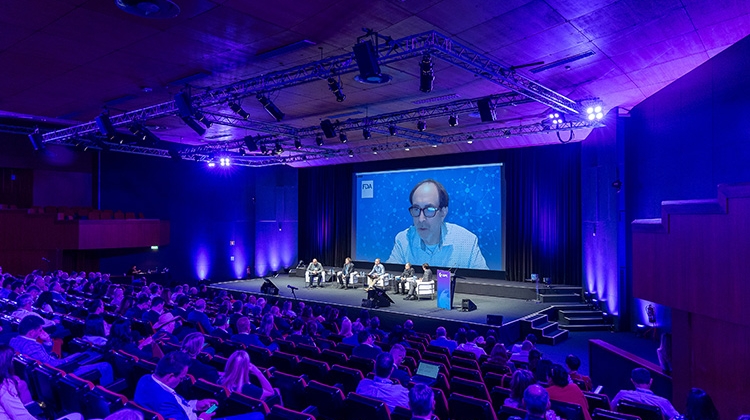Aseptic Processing Requires Robust Infrastructure Design and Strict Operational Control
Aseptic processing is a critical aspect of pharmaceutical manufacturing, ensuring the production of sterile products. Friedman referenced the US FDA's 2004 Guidance for Industry: Sterile Drug Products Produced by Aseptic Processing - Current Good Manufacturing Practice, emphasizing the significance of maintaining sterility throughout the process, from raw materials to the final product. Manufacturers can avoid contamination risks by implementing a robust infrastructure with suitable equipment and well-designed facilities. Many factors, such as aging facilities, inadequate maintenance, and human error-prone operational designs, can affect robustness. Modern technology, such as digitalization, automation, and isolation technology, among other things, can be used to reduce risk. Friedman noted that ICH Q9 states that quality risk management (QRM) includes taking into account new knowledge and experience, as well as lifecycle events, which can affect the original QRM decision.
Key design objectives in aseptic processing include:
- The facility infrastructure, including optimizing cleanroom design, layout, operational space, air volume, process flow, and material flow
- Protection of the aseptic line through adequate separation, using robust barrier isolator technology that prevents the ingress of lower-quality air into the Class 100 (ISO 5) area
- Process design which minimizes exposure of all sterile product elements and equipment to potential contamination hazards
- The limitation or elimination of manual manipulations, which can sometimes be accomplished by integrating steps rather than using manual transfers
The Importance of Risk Management
Risk management plays a pivotal role in aseptic processing operations. It involves identifying potential risks, assessing their impact, and implementing effective mitigation strategies. By integrating quality risk management (QRM) principles into their processes, pharmaceutical companies can proactively identify possible vulnerabilities and take preventive actions to ensure product safety. Failure to identify risk properly can result in patient harm. QRM should be applied to all processes, equipment, facilities, and manufacturing activities so that companies can be proactive in identifying, evaluating, and controlling potential quality risks. Friedman emphasized that the process of QRM begins with identifying operational hazards and modes of failure so that companies can be proactive in identifying, evaluating, and implementing effective mitigation strategies.
Opportunities to De-Risk Operations
A cGMP-compliant quality system will properly use QRM throughout the facility lifecycle to seek out modern technologies capable of ensuring sterility and supply reliability. Friedman provided the audience with several opportunities to de-risk operations, such as:
- Facility: modern infrastructure
- Utilities: steam-in-place (SIP) connectors instead of aseptic connections should be the norm
- Equipment: isolator or restricted access barrier (RAB)
- Cleanroom Design: appropriate layout and space for appropriate flow and perform interventions aseptically
- Integrated Transfers: including automated loading of lyophilizers and rapid transfer ports (RTPs)
- Automation: changing from manual interventions to automated steps, including robotics
- Better Smoke Study Interpretation for Hazard Identification: expert reviews of risks and implementation of needed risk reductions
- Digitalization: examples include building management systems (improved software leverages continuous monitoring for earlier detection and more proactive facility control in line with Pharma 4.0™)
- Rapid Testing/Monitoring Technologies: to augment monitoring and control for better detection, quantification, and identification, automation such as a building automation system or building management systems may be helpful
Contamination Control Strategies
Contamination control strategies (CCS) are vital to maintaining aseptic processing integrity. Friedman discussed various strategies, including personnel training and qualification, environmental monitoring, cleaning and disinfection practices, and the use of sterile components and materials. These strategies collectively contribute to minimizing contamination risks and ensuring product quality. Developing a CCS across the entire facility is an excellent way to identify all critical control points and assess the effectiveness of all risks associated with the quality and safety of medicinal products. The combined strategy of the CCS should establish robust assurance of contamination prevention. The CCS should be actively reviewed and, if necessary, updated on an ongoing basis. Moreover, it should be used to drive continuous improvement of the manufacturing and control processes.
The Importance of Microbiologists
Friedman stressed the importance of having qualified microbiologists on the team to enable effective risk management. He noted that the ICH Q9(R1) guideline emphasizes the importance of assembling the right team to identify hazards and make the right design choices, as this is a key component of the process. Microbiologists are crucial members of the team, particularly in sterile facilities. Friedman observed that in sterile violative or official action indicated (OAI) cases seen by the US FDA, one of the underlying issues is a lack of qualified microbiologists involved in areas where their expertise is needed, such as:
- Conducting and supervising microbiology tests in the quality control (QC) laboratory
- Participating routinely on multi-disciplinary teams that make manufacturing design, control, and validation decisions
Friedman closed by stating that de-risking decisions are driven by a compliant quality system, which is the foundation for sustainable compliance and quality assurance. Pharmaceutical manufacturers can enhance patient safety and maintain the highest quality standards by adopting QRM principles, utilizing technologies like RABS, and implementing effective contamination control strategies.
Related content: GMP Sterile Pharmaceutical Manufacturing Facility Training Course.
Disclaimer
This is an informal summary of presentation on 17 April 2024 at the ISPE Europe Annual Conference in Lisbon, Portugal. It has not been vetted by any of the agencies or regulators mentioned in this article, nor should it be considered the official positions of any of the agencies mentioned.




